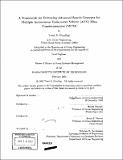| dc.contributor.advisor | Henrik Schmidt. | en_US |
| dc.contributor.author | Gooding, Trent R. (Trent Ronald), 1972- | en_US |
| dc.contributor.other | Massachusetts Institute of Technology. Dept. of Ocean Engineering. | en_US |
| dc.date.accessioned | 2006-11-06T18:13:38Z | |
| dc.date.available | 2006-11-06T18:13:38Z | |
| dc.date.copyright | 2000 | en_US |
| dc.date.issued | 2001 | en_US |
| dc.identifier.uri | http://hdl.handle.net/1721.1/34341 | |
| dc.description | Thesis (Nav.E. and S.M.)--Massachusetts Institute of Technology, Dept. of Ocean Engineering, February 2001. | en_US |
| dc.description | Includes bibliographical references (leaves 113-114). | en_US |
| dc.description.abstract | Waterborne mines pose an asymmetric threat to naval forces. Their presence, whether actual or perceived, creates a low-cost yet very powerful deterrent that is notoriously dangerous and time consuming to counter. In recent years, autonomous underwater vehicles (AUV) have emerged as a viable technology for conducting underwater search, survey, and clearance operations in support of the mine countermeasures (MCM) mission. With continued advances in core technologies such as sensing, navigation, and communication, future AUV MCM operations are likely to involve many vehicles working together to enhance overall capability. Given the almost endless number of design and configuration possibilities for multiple-AUV MCM systems, it is important to understand the cost-benefit trade-offs associated with these systems. This thesis develops an analytical framework for evaluating advanced AUV MCM system concepts. The methodology is based on an existing approach for naval ship design. For the MCM application, distinct performance and effectiveness metrics are used to describe a series of AUV systems in terms of physical/performance characteristics and then to translate those characteristics into numeric values reflecting the mission-effectiveness of each system. The mission effectiveness parameters are organized into a hierarchy and weighted, using Analytical Hierarchy Process (AHP) techniques, according to the warfighter's preferences for a given operational scenario. Utility functions and modeling provide means of relating the effectiveness metrics to the system-level performance parameters. Implementation of this approach involves two computer-based models: a system model and an effectiveness model, which collectively perform the tasks just described. The evaluation framework is demonstrated using two simple case studies involving notional AUV MCM systems. The thesis conclusion discusses applications and future development potential for the evaluation model. | en_US |
| dc.description.statementofresponsibility | by Trent R. Gooding. | en_US |
| dc.format.extent | 114 leaves | en_US |
| dc.format.extent | 5752855 bytes | |
| dc.format.extent | 5757596 bytes | |
| dc.format.mimetype | application/pdf | |
| dc.format.mimetype | application/pdf | |
| dc.language.iso | eng | en_US |
| dc.publisher | Massachusetts Institute of Technology | en_US |
| dc.rights | M.I.T. theses are protected by copyright. They may be viewed from this source for any purpose, but reproduction or distribution in any format is prohibited without written permission. See provided URL for inquiries about permission. | en_US |
| dc.rights.uri | http://dspace.mit.edu/handle/1721.1/7582 | |
| dc.subject | Ocean Engineering. | en_US |
| dc.title | A framework for evaluating advanced search concepts for multiple autonomous underwater vehicles (AUV) mine countermeasures (MCM) | en_US |
| dc.type | Thesis | en_US |
| dc.description.degree | Nav.E.and S.M. | en_US |
| dc.contributor.department | Massachusetts Institute of Technology. Department of Ocean Engineering | |
| dc.identifier.oclc | 48157237 | en_US |
